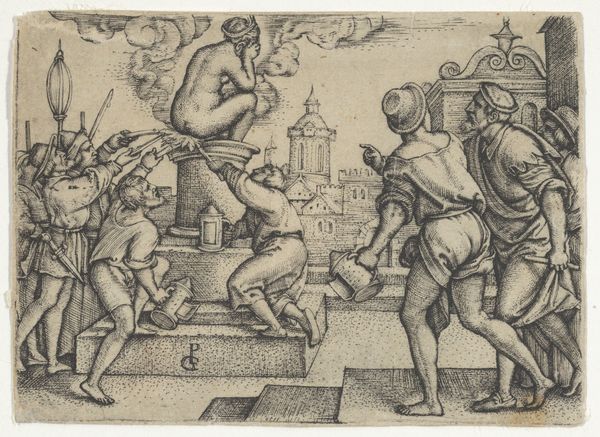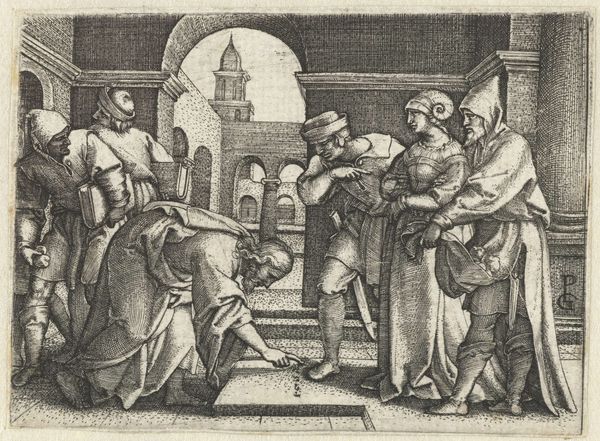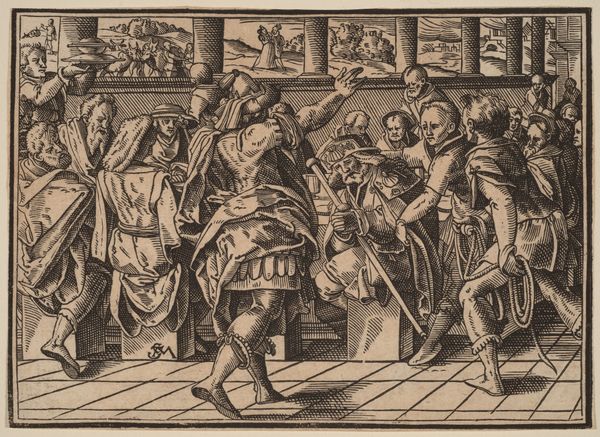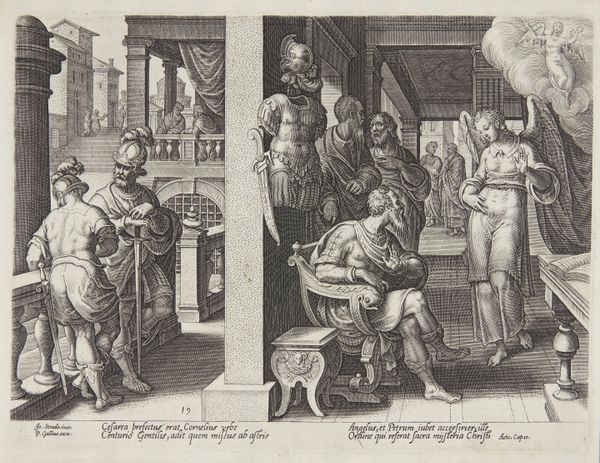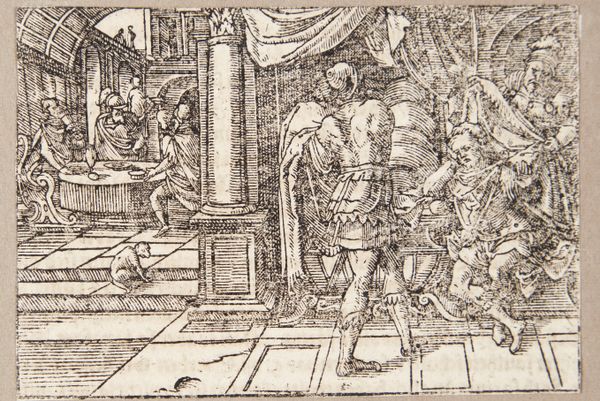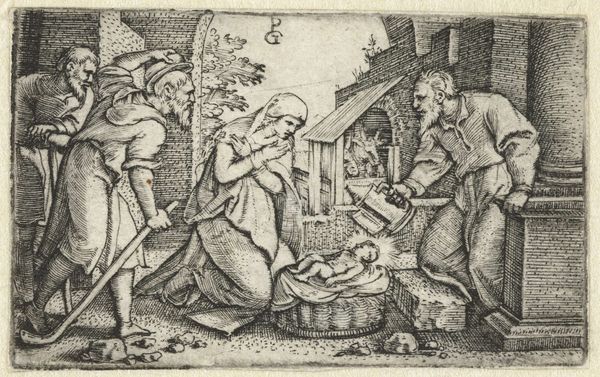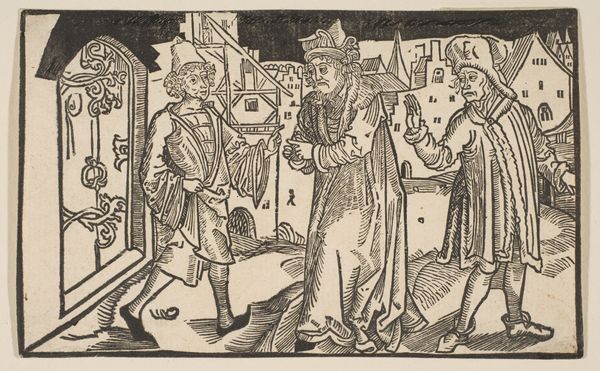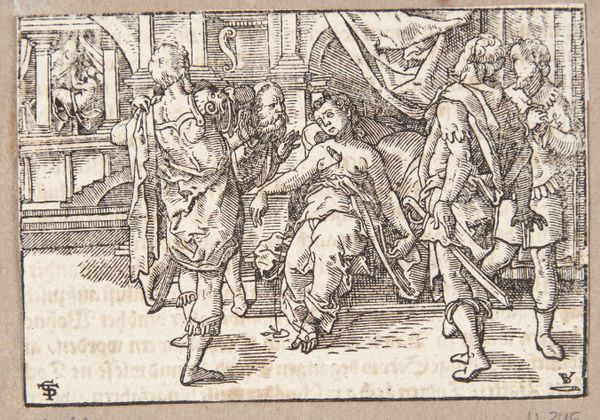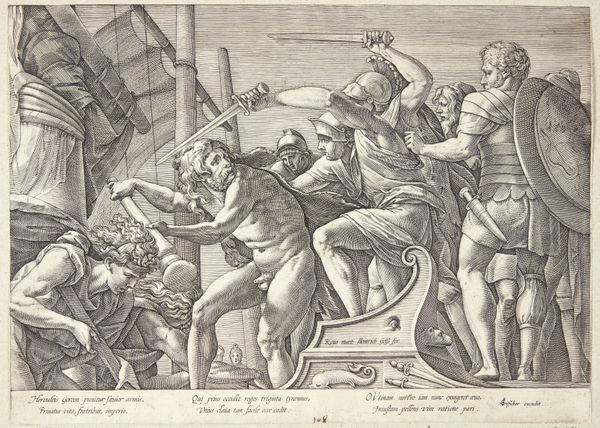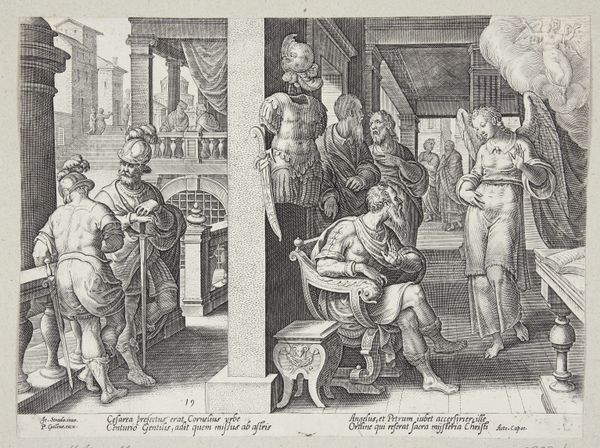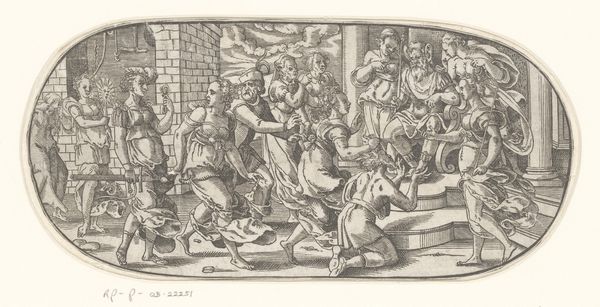
drawing, print, paper, engraving
#
drawing
#
narrative-art
# print
#
figuration
#
paper
#
history-painting
#
italian-renaissance
#
engraving
Dimensions: 56 × 81 mm (image/sheet)
Copyright: Public Domain
Editor: This is "Virgil Suspended in a Basket, copy" by Georg Pencz, made sometime between 1541 and 1600. It's an engraving on paper. The scene feels theatrical, almost like a stage play, with this philosopher stuck in a rather precarious situation. What do you see in this piece, considering its time and context? Curator: This print presents a rich tapestry of social commentary embedded within a historical narrative. Consider how the depiction of Virgil, a figure of immense intellectual authority, being fooled and hoisted in a basket plays into Renaissance anxieties about knowledge, power, and gender. How does this image engage with, or subvert, the power dynamics of the time? Editor: I hadn't considered that angle! So, Virgil's humiliation… Curator: Exactly. Think about the voyeuristic pleasure afforded to the crowd depicted here. Pencz places them as witnesses and, in a way, collaborators in Virgil’s downfall. Consider how the story itself is a critique of the philosopher's perceived folly, emphasizing the pitfalls of intellectual arrogance or perhaps, more subtly, the dangers of trusting in love and desire above reason. Who do you think is truly being 'suspended' here—Virgil literally, or the ideals he represents, metaphorically? Editor: So it is not really about the event as much as about... undermining authority? Curator: Precisely! And further, reflect upon who this print was *for*. Prints like these circulated widely. They served as accessible forms of visual storytelling, reinforcing existing social hierarchies and moral lessons. This image engages questions of gender, class and intellectual authority. Can we consider this image as an early form of social media commentary? Editor: That's a really fascinating point. I never would have looked at it that way. Seeing how these power structures from centuries ago are echoed in new media... wow! Curator: Absolutely. Understanding the past helps us critique the present, and perhaps create a more equitable future. It shows how relevant historical art and visual culture remains today!
Comments
No comments
Be the first to comment and join the conversation on the ultimate creative platform.
